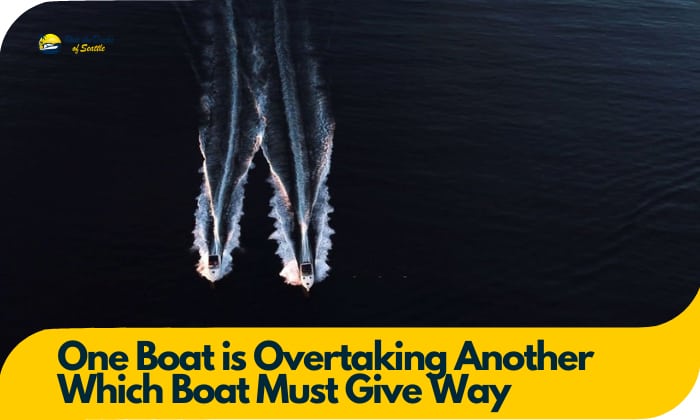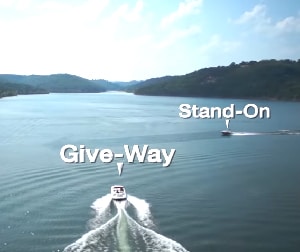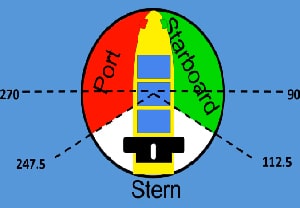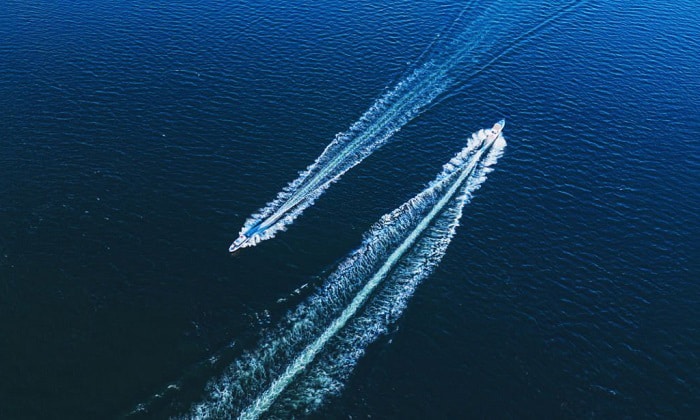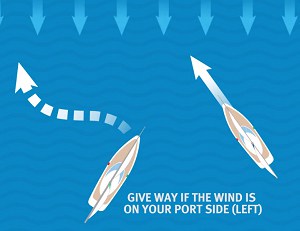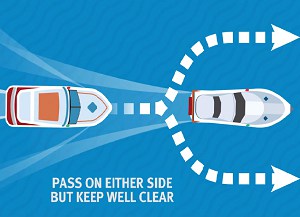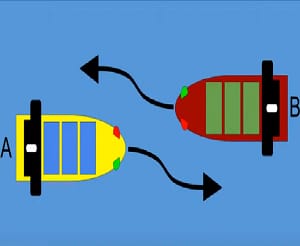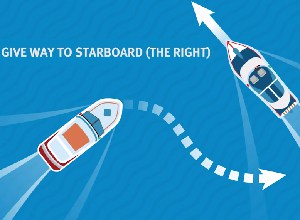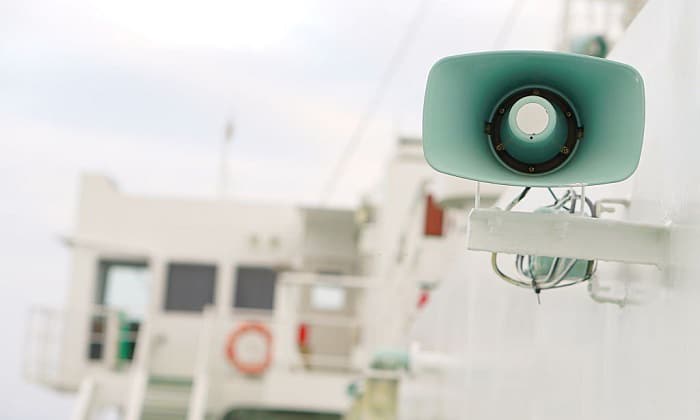It is not foolish to ask, “if one boat is overtaking another which boat must give way?” This concern is as valid as learning the rules of navigation. And to give you a preview of our answer, the “give-way” vessel should always do the “early and substantial action.”
Please continue reading for a more detailed explanation. Learning about this should help your boating adventures be safer for you, your family, your friends, and everyone else in the water.
Table of Contents
Essential Concepts
Determining which boat has the right of way is more challenging than identifying who should give way on the road. After all, marked highway lanes are non-existent in open bodies of water.
So, let us start by clarifying a few concepts related to our topic.
1. Stand-on vessel
A watercraft is a stand-on vessel if it maintains its direction (heading or course) and speed when it “interacts” with another watercraft. If you are piloting this boat, you will not do anything except stay the course.
2. Give way vessel
If the stand-on vessel’s job is to stand its ground, the give-way boat’s job is to initiate an action to avoid colliding with a stand-on vessel.
It is like driving your car following another automobile. The other car is the “stand-on” vessel, maintaining its speed. If you want to overtake this vehicle, you can do so by signaling and passing to the side to avoid a collision.
3. Give-way or danger zone
We often associate “green” with “safe” and “red” with “danger.” However, it is not the case in the boating world. Boats have “green sectors” defined by the vessel’s green sidelight, extending from the bow (front) to about 112.5 degrees along the starboard (right) side.
If you see any boat or watercraft within this sector, the rules of navigation dictate you are the “give way vessel.” If another boat’s captain sees your green light, you become the “stand-on” vessel.
4. Early and substantial action
On the road, we always keep a “safe distance” from other motorists, especially when overtaking or maneuvering our vehicles relative to others. Mariners do not use the phrase “safe distance” because the laws of physics are different on the water than on land.
For example, container ships and cruise liners need extended distances to maneuver their vessels and avoid collisions. On the other hand, two jon boats might have a similar speed, allowing them to navigate “safely” relative to each other at shorter distances.
Hence, mariners observe “early and substantial action” instead of keeping a “safe distance” relative to other watercraft. They’d want to maneuver their boats early enough to put plenty of distance between them and other vessels. Besides, the pilot or captain is only certain of their actions. They will never know what the other boat’s captain will do.
How Should You Act When Interacting With Another Boat?
Let us look at several situations applying the key concepts we learned above.
1. A sailing vessel meets another sailing vessel
Imagine yourself piloting your sailboat, and you see another sailboat dead ahead (right in front). The rule dictates both vessels must maneuver to their starboard (right) so they pass on their ports (left).
However, whichever sailboat has the wind blowing to its port (left side) is automatically the give-way vessel.
Suppose you are trailing a sailing vessel, and you want to overtake it. Which boat should stand on? That would be the sailing vessel in front of you. In that case, you must steer your sailboat (you are now the give-way vessel) to the other boat’s port or starboard.
2. A sailing vessel meets a powered watercraft (pwc)
As a rule, powered watercraft are always the give-way vessels. So, which vessel is the stand-on vessel? That would be the sailboat.
Let us say you are enjoying your jet ski (a personal watercraft or PWC), and there are sailing vessels in the area. If a sailboat and a PWC are meeting head-on, the jet ski is the give-way vessel, and you must steer it to avoid colliding with the sailing vessel.
This same rule also applies if the boats are on the crossing paths with each other or a motorboat is approaching a sailboat head-on. The powered watercraft must be the “give-way” vessel, initiating early and substantial action to not hit the sailing vessel.
But how should you act if a sailboat overtakes a powerboat? Should you be the “give-way” vessel?
If a power-driven vessel is being overtaken by a sailboat, the latter is the “give-way” vessel, and the former is the “stand-on.”
3. A boat meets another watercraft head-on
What if a motorboat and a PWC are approaching head-on? The same rule applies: they must steer their respective power vessels to starboard and pass on the port.
4. A boat meets another boat at an angle
Suppose you see another boat intersecting your path or coming in at an angle. If the other watercraft is within your “green sector” or “danger zone,” the rule dictates you must initiate early and sufficient action. You are the “give-way” vessel.
Sound Signals to Overtake or Cross Another Boat
The rule for overtaking on roads is simple because you only maneuver your car to the other lane. It is different on the water. So, how do you know if the “give way” vessel will overtake you (the stand-on vessel) on your port or starboard?
If you plan to overtake a boat and pass by its port side (left), you must sound two short horn blasts. You must also wait for the other captain to reply with two short blasts.
One short blast is necessary if you intend to pass to the boat’s starboard. Again, wait for the other captain to reply.
Suppose you are confused about the other captain’s intentions. In that case, the rule dictates you sound five short horn blasts.
Conclusion
If one boat is overtaking another which boat must give way? The watercraft overtaking is always the “give way” vessel, requiring its pilot to maneuver the boat (power-driven or otherwise) left or right to pass the “stand-on” vessel in front.
Meeting head-on requires both vessels to steer to starboard and pass to port. Crossing dictates the vessel whose “green sector” includes the other boat to maneuver itself (be the give-way boat) and avoid hitting the other watercraft.
Sailboats are always “stand-on” vessels unless they overtake.

Ten years of enjoying countless trips on boats never made me love them any less! So I am here to put all those experiences into good use for other boaters who want to have a safe and fun trip with their friends and families.

